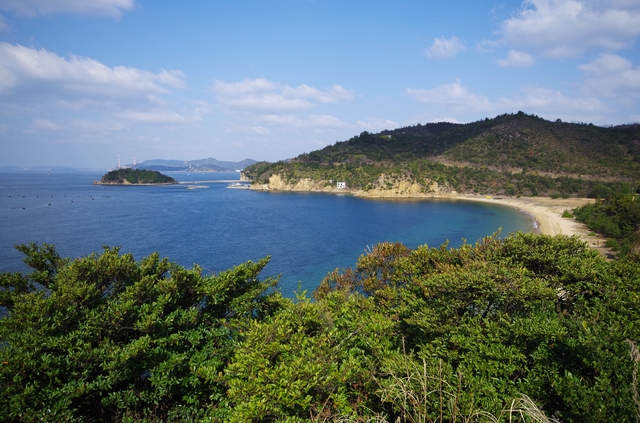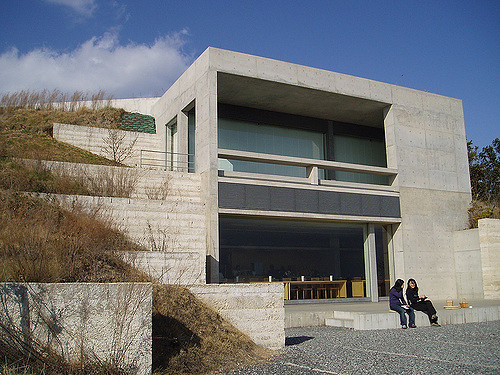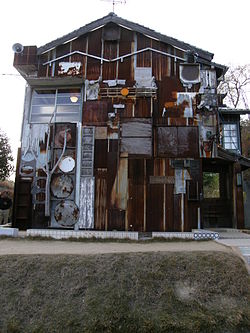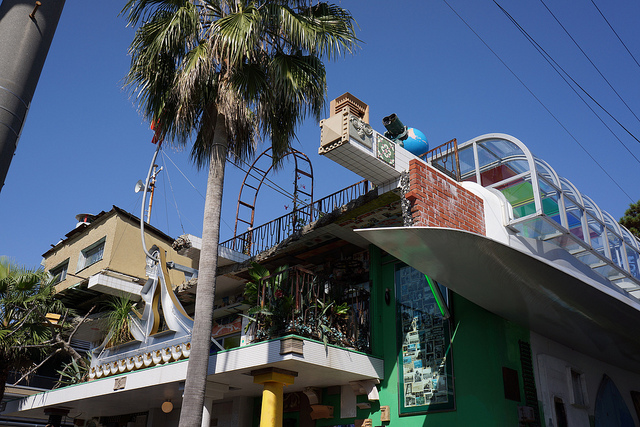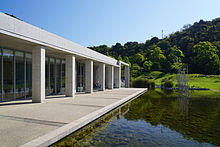
The art islands floating in the Seto Inland Sea
Among all the art spots all around Japan, the one getting the most attention right now is the Seto Inland Sea. Even without mentioning the international arts festival they hold once every three years, it's a place where you can enjoy lots of modern art. It's a must-see spot if you want to experience the beauty of Japanese islands.
This post may contain affiliate links. If you buy through them, we may earn a commission at no additional cost to you.
What is the Seto Inland Sea International Arts Festival?
The Seto Inland Sea International Festival (French name: Setouchi Triennale) is a modern arts festival held on the islands of the Seto Inland Sea. It is a triannual event, and the first one was held in 2010 and the 2nd in 2013.
The Seto Inland Sea International Arts Festival began in the underground art museum on Naoshima and from there the art pieces were studded around the 12 islands: Naoshima, Teshima, Megijima, Ogijima, Shodoshima, Ooshima, Inujima, Shamijima, Honjima, Awashima, and Ibukijima. After the festival ended, some of the pieces became permanent parts of the island.
There are many highlights of the festival, including Naoshima's Chichu Art Museum and the Ando Museum dedicated to architect Tadao Ando as well as Teshima's Teshima Art Museum. There are cafes and lodgings on the major islands, so you can take a few days to spend your vacation going around the different islands and getting addicted to modern art.
The entrance to the islands of the Seto Inland Sea, Naoshima
There are tons of Yayoi Kusama's pumpkins on Naoshima!
6 recommended areas of the Seto Inland Sea art spots
Here are some recommended spots where art by artists like Tadao Ando, Yayoi Kusama, James Turrell, and others can be found.
1. Chichu Art Museum (Naoshima)
www.flickr.com; photo by ainge91_emo
It's the best place to enjoy the feel of the islands while enjoying art.
The Chichu Art Museum (地中美術館 Chichū Bijutsukan?) (lit. "art museum in the earth") is a museum built directly into a southern portion of the island of Naoshima in Kagawa Prefecture, Japan. It was designed by architect Tadao Ando and opened its doors to the public on July 18, 2004.
Despite its position buried underground, the design of the building is such that it facilitates the exclusive use of natural light to illuminate a number of the exhibits, changing their appearance at different viewing times throughout the day and, in essence, encompassing the building itself within the same realm as the art on display.
2. Art House Project (Naoshima)
The facade of "Haisha," one of the houses part of this project
The Art House Project is an art project underway in Naoshima's Honmura district. It began in 1998 with Tatsuo Miyajima's Kadoya, and presently comprises seven houses: Kadoya, Minamidera, Kinza, Go'o Shrine, Ishibashi,Gokaisho, and Haisha.
The Art House Project takes empty houses scattered about residential areas, and turns the spaces themselves into works of art, weaving in the history and memories of the period when the houses were homes. Meetings between visitors to the island and the island's people in places where they go about their daily lives also provide occasions for a variety of interesting encounters.
Shifting its focus from "nature and art" to "people" and conducting its activities in a zone of daily life, the Art House Project continues its growth into a truly organic project that changes day-by-day.
3. Naoshima Bathhouse「I♥湯」(Naoshima)
www.flickr.com; photo by Kentaro Ohno
A public bathhouse in Naoshima. While the outside is already exciting, the bathing area and the bath tub are overflowing with modern art. At the restaurant next door, you can drink beer while taking a bath.
This is an art facility created by artist Shinro Ohtake where visitors are actually able to take a bath. "I♥湯" was created to provide both a place for Naoshima residents to rejuvenate and a venue for exchanges between Japanese and international visitors and locals. Designed in collaboration with the creative group graf, the exterior and fittings of the bathhouse, from the bath itself to the pictures decorating the walls, the mosaics, and even the toilet fittings, reflect the world of Shinro Ohtake.
The bathhouse is operated by the Town-Naoshima Tourism Association and the Miyanoura District Association. Come visit and soak in the tub, and experience art with your entire body.
4. Teshima Art Museum (Teshima)
It's a strange, lightly suspended spherical building next to some terraced rice fields. Once you enter, it feels like in you're another world and you'll forget about how much time is passing.
The Teshima Art Museum (豊島美術館 Teshima Bijitsukan?) hosts a single piece of artwork and is located on the island of Teshima, Kagawa Prefecture,Japan, in the Seto Inland Sea.[1][2] It is operated by the Benesse Foundation. The architect is Ryue Nishizawa (co-founder of SANAA). The museum building is made of a freestanding concrete shell, 40 by 60 meters, and 4 meters at its highest point.
The artwork is titled Matrix and was created by sculptor Rei Naito.
5. Inujima Seirensho Art Museum (Inujima)

www.flickr.com; photo by Kentaro Ohno
It goes without saying that it has the air of a former refinery, but only people who have stepped into the building can understand how it makes people's hearts throb.
Inujima Seirensho Art Museum is a museum that preserves and reuses the remains of a copper refinery on the island. Based on the concept of using the existing to create the yet-to-be, the project brings together architecture by Hiroshi Sambuichi, which makes use of the existing smokestacks and karami bricks from the refinery and uses solar, geothermal, and other natural energies to reduce the burden on the environment, and art by Yukinori Yanagi, which uses Yukio Mishima, who sounded warnings over aspects of Japan's modernization, as a motif. The building also employs a sophisticated water purification system that makes use of the power of plants. The project truly embraces the concept of a recycling-based society as a model for a new type of regional revitalization through industrial heritage, architecture, art, and the environment.
6. The Presence of Absence(Megijima)

www.flickr.com; photo by Kentaro Ohno
It's an artwork by Leandro Erlich. Since there's also a restaurant, it's a perfect place to rest your tired body after looking at so much art!
A restored dwelling holds two experiential installations that produce clever illusions such as footprints moving across the sand where no one walks. A smoking room, library and restaurant are also located within the same building.
The recommended way to see everything
The Seto Inland Sea art spots are very spread out, and of course you have to take the ferry from island to island.
There are various ways to get around the islands, such as walking, taking buses, or renting a bicycle.
If you're only going for one day, it might be hard to see all the art even on just one island.
If you want to see everything, you'll definitely have to stay for a few days.
While you can go for the art, it goes without saying that you'll also experience the Japanese scenery and the way the islanders live.
Even if you just go to lazily gaze at the see and walk the streets of the villages, you'll definitely be satisfied with your trip.
The information in this article is accurate at the time of publication.


